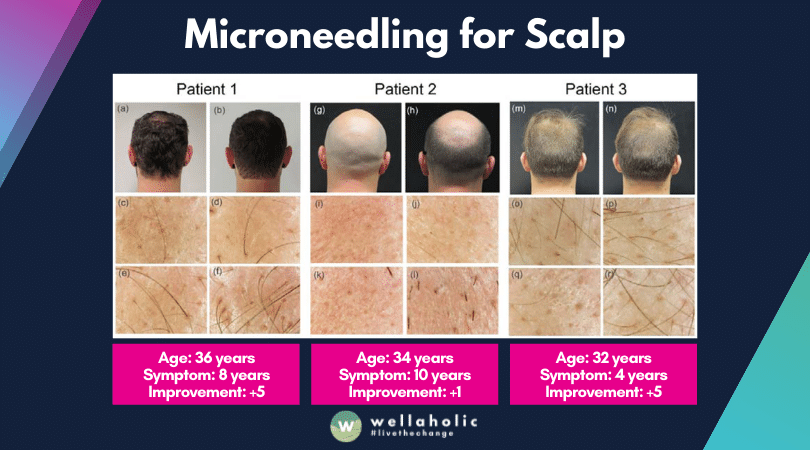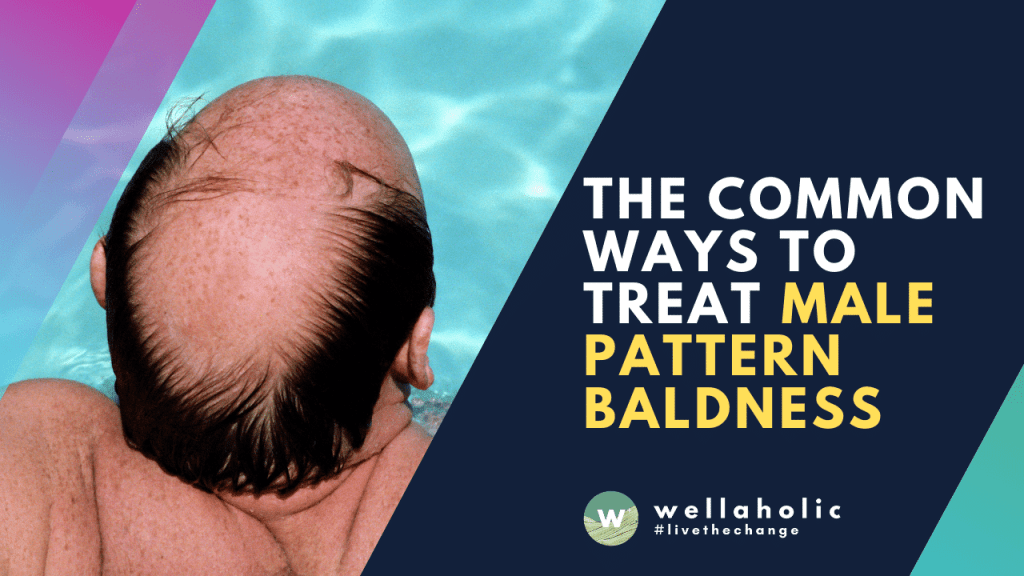
From Receding to Regrowing: Mastering Male Pattern Baldness

From Receding to Regrowing: Mastering Male Pattern Baldness
Male pattern baldness affects millions worldwide. Understanding its causes and treatments can help you take control of your hair health journey.
📊 Key Facts About Male Pattern Baldness
50% of men experience noticeable hair loss by age 50
DHT hormone is the primary cause of male pattern baldness
Early treatment yields better results for hair retention
Genetics account for 80% of male pattern baldness cases
💡 Effective Solutions
FDA-Approved Medications
Finasteride and Minoxidil have proven effectiveness for many men
Low-Level Laser Therapy
Non-invasive treatment that stimulates follicles and promotes growth
Hair Transplantation
Permanent solution with natural-looking results for advanced cases
Scalp Micropigmentation
Creates the appearance of a fuller head of hair for those with thinning
Ready to Take Control of Your Hair Loss?
Book a consultation with our hair specialists today and discover the best solution for your needs.
BOOK NOW 📅© 2025 Wellaholic – Your Partner in Hair Restoration
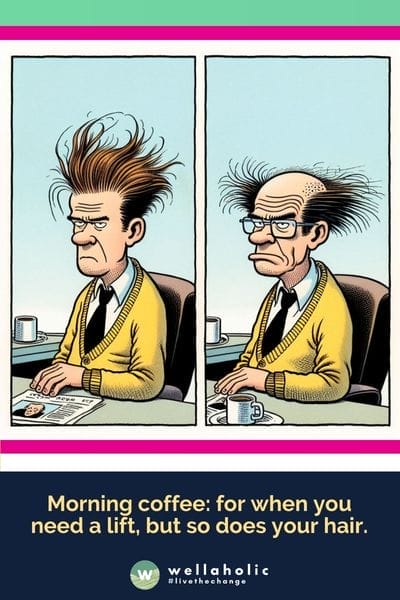
Introduction: The Common Ways to Treat Male Pattern Baldness
Have you noticed more hair on your pillow or in the shower drain lately?
You’re not alone. Male pattern baldness affects millions of men worldwide, but there’s no need to panic. We’ve seen countless customers at Wellaholic grappling with thinning hair, and we understand the impact it can have on self-esteem. The good news is that there are effective treatments available to slow down hair loss and even promote regrowth. From FDA-approved medications like minoxidil and finasteride to advanced procedures like hair transplants and PRP therapy, the options for treating male pattern baldness have come a long way.
In this article, we’ll explore these treatments and help you understand which ones might be right for you.
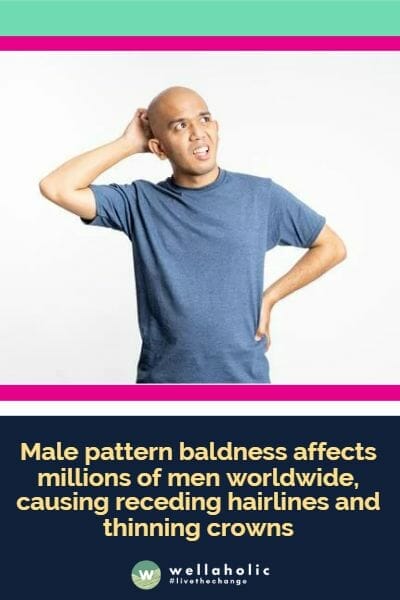
What is Male Pattern Baldness?
At Wellaholic, we often see customers concerned about hair loss. Male pattern baldness, also known as androgenetic alopecia, is the most common type of hair loss in men. It’s a condition that affects over half of all men by the age of 50.
This type of hair loss follows a specific pattern. It usually starts with a receding hairline at the temples or thinning at the crown of the head. Over time, the hair becomes finer and shorter, and the bald areas grow larger. The exact pattern can vary, but many men end up with a U-shaped or horseshoe pattern of hair around the sides and back of the head. It’s important to know that this condition is largely genetic and
linked to male hormones called androgens. While it’s not a health risk, we understand it can affect self-esteem and confidence.
Does Genetics Affect the Onset of Male Pattern Baldness?
Male pattern baldness is a common issue we see at Wellaholic. It’s a type of hair loss that affects many men as they age. The hair starts to thin at the crown and temples, often forming a U-shape around the back and sides of the head. This happens because of genetics and hormones. The hair follicles shrink over time, leading to shorter and finer hair. Eventually, these follicles stop producing hair altogether.
We’ve noticed that this condition can start as early as the late teens or early twenties for some men. It’s a gradual process that can take years to become noticeable. While it’s not a health risk, we understand it can affect self-esteem. That’s why we offer treatments like our HairGrow 3X to help our customers at Wellaholic combat this common form of hair loss.
“The key to solving hair loss is in your hands – take the steps to find the right solution for you.
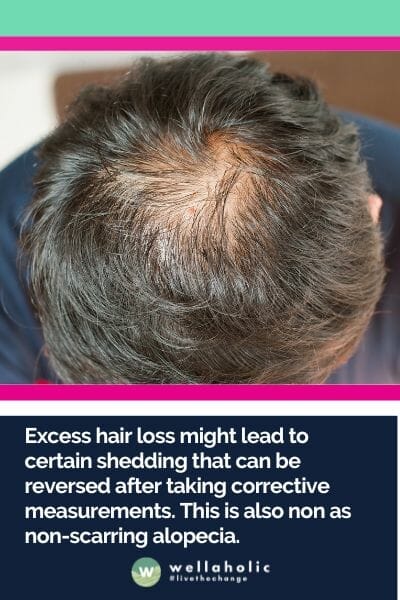
What causes Androgenetic Alopecia?
At Wellaholic, we often see customers who are curious about the root cause of their hair loss. Androgenetic alopecia, the most common type of hair loss, is a complex condition. It’s mainly caused by a mix of genetics and hormones. Our genes can make our hair follicles more sensitive to a hormone called dihydrotestosterone (DHT). When this happens, the hair growth cycle gets shorter. Over time, this leads to thinner hair and eventual hair loss.
We’ve noticed that other factors can also play a role. These include stress, certain medications, and even some health conditions. For women, changes in hormone levels during menopause can trigger hair loss. It’s important to remember that androgenetic alopecia affects both men and women, but in different patterns. Men often see a receding hairline and thinning at the crown, while women usually experience overall thinning across the scalp.
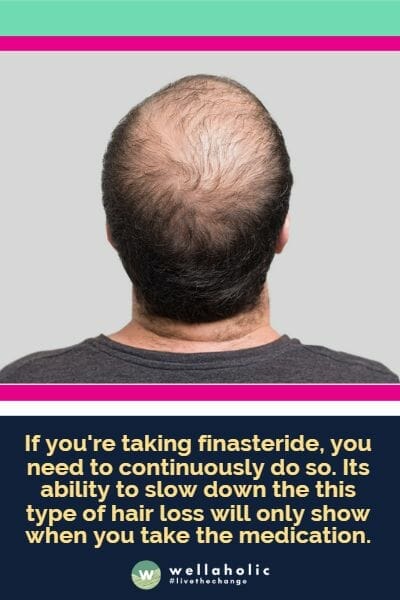
Treating Androgenetic Alopecia
At Wellaholic, we’ve seen many customers struggle with androgenetic alopecia. This common form of hair loss affects both men and women. We offer several treatments to help combat this issue. The two main FDA-approved options are topical minoxidil and oral finasteride. These work well for many people. Minoxidil helps stimulate hair growth, while finasteride blocks the hormone that causes hair loss.
We also use other methods to treat hair loss. Low-level laser therapy can boost hair growth by improving blood flow to the scalp. Microneedling is another option that can help. It creates tiny punctures in the skin to stimulate new hair growth. For some customers, we might suggest platelet-rich plasma (PRP) treatments. This uses your own blood to promote hair regrowth. Each person’s hair loss is unique, so we tailor our approach to fit individual needs.
What are the Latest Advancements in Treatment Androgenetic Alopecia?
We’ve seen some exciting advancements in treating androgenetic alopecia at Wellaholic. While traditional options like minoxidil and finasteride remain effective, newer treatments are showing promise.
One of the most promising developments is scalp RF microneedling. This combines microneedling with radiofrequency energy to stimulate hair growth. Studies have shown it can increase hair density by about 25% after a year of treatment. We’ve had great results using this on customers with male and female pattern hair loss. Another innovative option is low-level laser therapy (LLLT). Research indicates LLLT can boost hair growth by improving blood flow to hair follicles. In one study, men saw a 39% increase in hair growth after 16 weeks of treatment. We offer LLLT as part of our HairGrow 3X package. For some customers, we also recommend platelet-rich plasma (PRP) therapy, which uses your own blood to promote hair regrowth. The key is customizing the approach for each person’s unique needs.
Hair transplant surgery is a popular treatment option for hair loss among Asians. One study compiled by Wellaholic found that the number of hair transplant surgeries performed in Korea increased by 5.5-fold between 2008 and 2012.
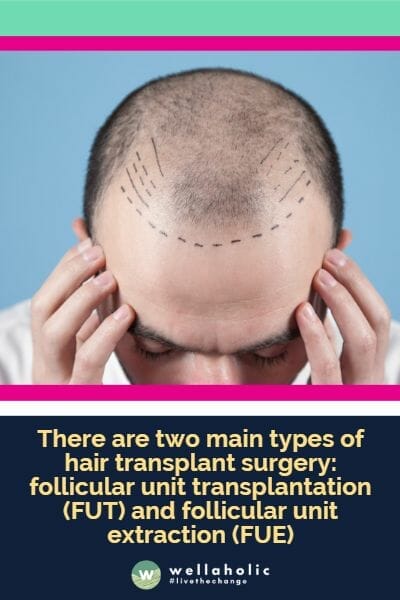
Hair Transplants
At Wellaholic, we’ve seen how hair transplants can change lives. This procedure moves hair from areas with thick growth to spots where it’s thinning or gone. It’s a big step for many of our customers, but the results are often amazing. We’ve watched people walk out with new confidence, ready to style their hair in ways they couldn’t before. The best part? It’s their own hair, so it looks and feels natural. We always tell our customers that while it takes time to see full results, the wait is worth it. Hair transplants can be a great choice for those who want a long-term solution to hair loss.
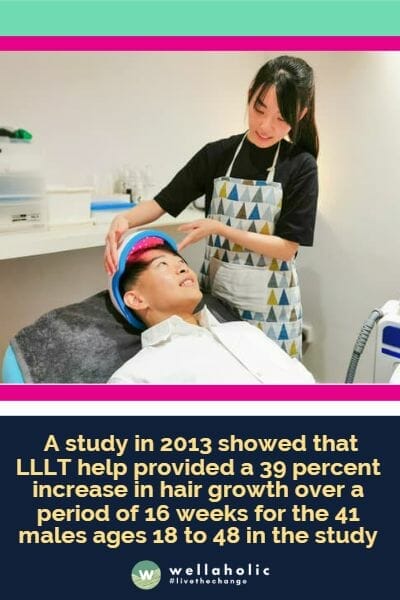
Low-Level Laser Therapy (LLLT)
At Wellaholic, we’re excited to offer Low-Level Laser Therapy (LLLT) to our customers. This treatment uses special light to help the body heal itself. LLLT can do many things, like reduce pain, help wounds heal faster, and even assist with weight loss. We’ve seen great results with our customers who use LLLT for different issues. Some find relief from joint pain, while others notice their skin looks better. It’s a gentle treatment that doesn’t hurt and can be used on many parts of the body.
We love that LLLT is so versatile. It can help with swelling, improve blood flow, and even boost the immune system. For our customers dealing with injuries or chronic pain, LLLT offers a way to feel better without drugs or surgery. We’ve also found it useful for skin care, helping to reduce wrinkles and improve skin tone. At Wellaholic, we’re always looking for safe, effective treatments, and LLLT fits the bill perfectly.
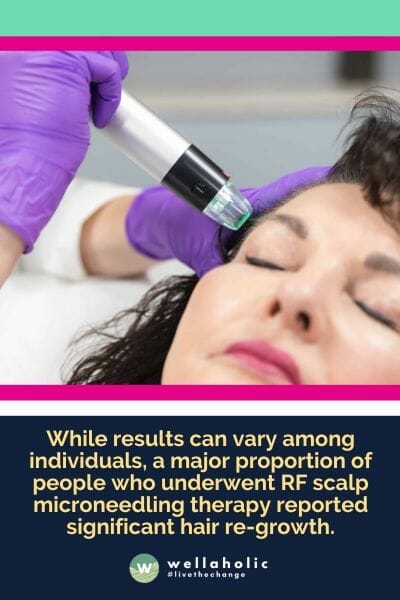
Microneedling for Scalp: A New Way to Treat Hair Loss
We’ve seen many customers at Wellaholic who struggle with hair loss. It’s a common problem that affects both men and women. Now, there’s a new treatment that’s showing promise: microneedling for the scalp. This method uses tiny needles to create small punctures in the skin. It might sound scary, but it’s actually quite gentle. The process helps to boost blood flow and stimulate hair growth.
Our team has been using this technique with great results. We’ve noticed that it can help make hair thicker and fuller. It also seems to work well when combined with other hair loss treatments. Many of our customers report seeing new hair growth after just a few sessions. We’re excited about this new way to help people feel more confident about their hair.
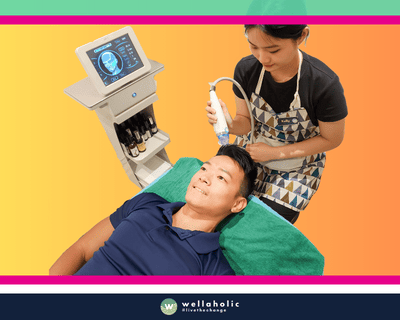
Wellaholic’s Professional Observations (From Our Customers)
In our personal experience with customers at Wellaholic, we have observed a few interesting points about treating male pattern baldness:
- Combination therapy often yields the best results. While individual treatments like finasteride, minoxidil, or LLLT can be effective on their own, we’ve seen the most impressive hair regrowth in customers who combine multiple modalities. For example, using oral finasteride along with topical minoxidil and regular LLLT sessions seems to provide a synergistic effect for many of our clients.
- Consistency and patience are key. Hair regrowth is a slow process, and it can take several months of diligent treatment before noticeable results appear. We always emphasize to our customers that they need to stick with their regimen consistently and have realistic expectations about the timeline for improvement. Those who are patient and persistent tend to be the most satisfied with their outcomes.
- Microneedling has been a game-changer for many. Since we started offering microneedling for the scalp in combination with minoxidil, we’ve seen a significant proportion of customers responding very positively. The micro-injuries from the needling seem to really enhance the absorption and effectiveness of the topical medication. For some, it has made the difference between lackluster results and truly impressive regrowth.
- Early intervention makes a big difference. The customers who start treatment at the first signs of hair loss or thinning almost always have better outcomes than those who wait until their hair loss is more advanced. Preserving the hair follicles early in the process seems to be much easier than trying to revive them after years of dormancy. We now really try to educate people about the importance of acting quickly when they notice hair loss.
Overall, while male pattern baldness remains a challenging condition to treat, the expanding array of options and our growing experience in combining therapies has enabled us to help more and more customers achieve their hair restoration goals. As always, a personalized approach that takes into account each individual’s unique hair loss situation is essential for optimal results.
Frequently Asked Questions (FAQ)
1. What exactly is male pattern baldness, and how common is it in Singapore?
Male pattern baldness, or androgenetic alopecia, is the most prevalent form of hair loss in men, affecting about 70% of Singaporean males by their 60s. This condition is triggered by genetic predisposition and hormonal changes, particularly dihydrotestosterone (DHT). At Wellaholic, we leverage advanced treatments like Low-Level Laser Therapy (LLLT) and topical solutions to combat this issue effectively. Early intervention can slow hair loss progression, promote regrowth, and restore confidence. Our expertise ensures tailored solutions for sustainable results.
🔵 Affects approximately 70% of Singaporean men by age 60.
🔵 Caused by genetics and hormonal imbalances like DHT.
🔵 Early treatment can prevent further hair thinning.
🔵 Wellaholic offers personalized treatment plans for optimal outcomes.
🔵 Non-invasive therapies are safe and effective for long-term use.
2. How does Wellaholic’s approach differ from other hair loss treatments in Singapore?
Wellaholic combines cutting-edge technology with evidence-based practices to address male pattern baldness holistically. Unlike generic solutions, our treatments such as LLLT, PRP therapy, and customized serums target root causes rather than just symptoms. Backed by years of experience in aesthetic wellness, we prioritize safety, efficacy, and customer satisfaction. Clients benefit from a comprehensive assessment that pinpoints their unique needs, ensuring better results compared to one-size-fits-all alternatives.
🔵 Utilizes advanced technologies like LLLT and PRP therapy.
🔵 Customized treatment plans based on individual assessments.
🔵 Focuses on addressing root causes, not just symptoms.
🔵 Proven track record of delivering noticeable improvements.
🔵 Prioritizes client comfort and overall well-being throughout the process.
3. Can lifestyle factors contribute to male pattern baldness, and how can they be managed?
While genetics play a significant role in male pattern baldness, lifestyle factors like stress, poor diet, and inadequate sleep can exacerbate hair loss. In fast-paced Singapore, where work-life balance is often challenging, these issues are increasingly common. At Wellaholic, we guide clients on adopting healthier habits alongside clinical treatments to maximize results. By combining nutritional advice, stress management techniques, and professional care, we empower individuals to take control of their hair health.
🔵 Stress and poor nutrition can worsen hair loss conditions.
🔵 Lack of sleep disrupts hormonal balance, affecting hair growth cycles.
🔵 Wellaholic provides holistic guidance beyond clinical treatments.
🔵 Encourages balanced diets rich in vitamins and minerals.
🔵 Combines lifestyle adjustments with science-backed therapies for best results.
4. Are there any side effects associated with hair regrowth treatments at Wellaholic?
At Wellaholic, all our treatments are designed to minimize risks while maximizing benefits. For instance, Low-Level Laser Therapy (LLLT) is non-invasive and has no known adverse effects when performed correctly. Similarly, Platelet-Rich Plasma (PRP) therapy uses the body’s natural healing mechanisms, reducing the likelihood of complications. Our certified professionals ensure strict adherence to safety protocols, providing peace of mind to clients seeking reliable solutions for male pattern baldness.
🔵 Non-invasive treatments like LLLT have minimal risk of side effects.
🔵 PRP therapy utilizes the body’s own resources, lowering complication rates.
🔵 Certified practitioners follow stringent safety standards.
.BLUE All procedures are tailored to suit individual tolerances and needs.
🔵 Client feedback consistently highlights high satisfaction and low discomfort levels.
5. How soon can I expect to see results from hair regrowth treatments?
Results vary depending on the severity of hair loss and the chosen treatment plan. Typically, clients begin noticing improvements within 3-6 months of consistent therapy at Wellaholic. Treatments like LLLT stimulate dormant follicles, promoting gradual but steady regrowth. With regular sessions and proper aftercare, many achieve thicker, fuller hair over time. Our team monitors progress closely, adjusting strategies to optimize outcomes without compromising quality.
🔵 Noticeable improvements usually appear within 3-6 months.
🔵 Consistency is key for achieving long-lasting results.
🔵 LLLT activates dormant follicles for sustained regrowth.
🔵 Regular monitoring ensures continuous optimization of treatment plans.
🔵 Personalized aftercare enhances the effectiveness of each session.
6. Why should I choose Wellaholic for my hair regrowth journey?
Wellaholic stands out as a trusted name in aesthetic wellness due to its commitment to excellence and innovation. Our team comprises highly trained experts who stay updated on the latest advancements in hair restoration. We offer scientifically proven methods like LLLT and PRP therapy, ensuring safe and effective solutions. Moreover, our focus on personalized care sets us apart, allowing clients to embark on a transformative journey tailored specifically to their goals.
🔵 Staffed by highly qualified and experienced professionals.
🔵 Offers state-of-the-art treatments backed by scientific research.
🔵 Emphasizes personalized care for every client’s unique needs.
🔵 Maintains a reputation for delivering exceptional service in Singapore.
🔵 Dedicated to helping clients regain confidence through proven therapies.

Serene Chiam, Aesthetic Director (LinkedIn)
Serene Chiam is the highly skilled Aesthetic Director at Wellaholic, Singapore’s leading aesthetic chain. With over a decade of expertise in the aesthetics industry, Serene brings a wealth of knowledge and experience to her role. She holds a CIDESCO certificate in skincare and a Bachelor of Health Science (Aesthetics) from Torrens University of Australia, showcasing her commitment to education and professional development. Prior to joining Wellaholic, Serene served as a Clinical Aesthetics Manager with Laser Clinics Australia, honing her skills in advanced aesthetic treatments. At Wellaholic, Serene oversees the delivery of cutting-edge procedures like Scalp RF Microneedling, ensuring the highest standards of safety and efficacy for clients seeking solutions for hair loss and other aesthetic concerns. Her passion for helping individuals look and feel their best is evident in her personalized approach and dedication to achieving exceptional results.
Contact Serene at [email protected]
GET IN TOUCH
Book Now Pay Later


Revolutionise Your Hair Regrowth Journey with Scalp RF Microneedling
- ⭐ RF Microneedling and AGA Treatment. RF microneedling + minoxidil can help treat AGA (male pattern baldness).
- ⭐ Efficacy in Pattern Hair Loss. RF microneedling is effective for hair loss in both men and women.
- ⭐ Study Results on Hair Density Increase. A study found that RF microneedling can improve hair density by 25% after one year.
- ⭐ Adjustable Depth of Microneedling. Microneedling depth can be customized from 0.5 mm to 2.5 mm.
- ⭐ Flexible RF Microneedling Frequency. RF Microneedling sessions can be spaced from weekly to monthly, depending on your needs.
- ⭐ Award-Winning. Wellaholic’s treatments have been recognized by top beauty publications such as Daily Vanity, Beauty Insider, and Tropika Club Magazine.
- ⭐ Over 2000 Verified Customer Reviews. Wellaholic has over 30 industry awards and over 2000 positive reviews from customers, and >50% are repeat customers.
